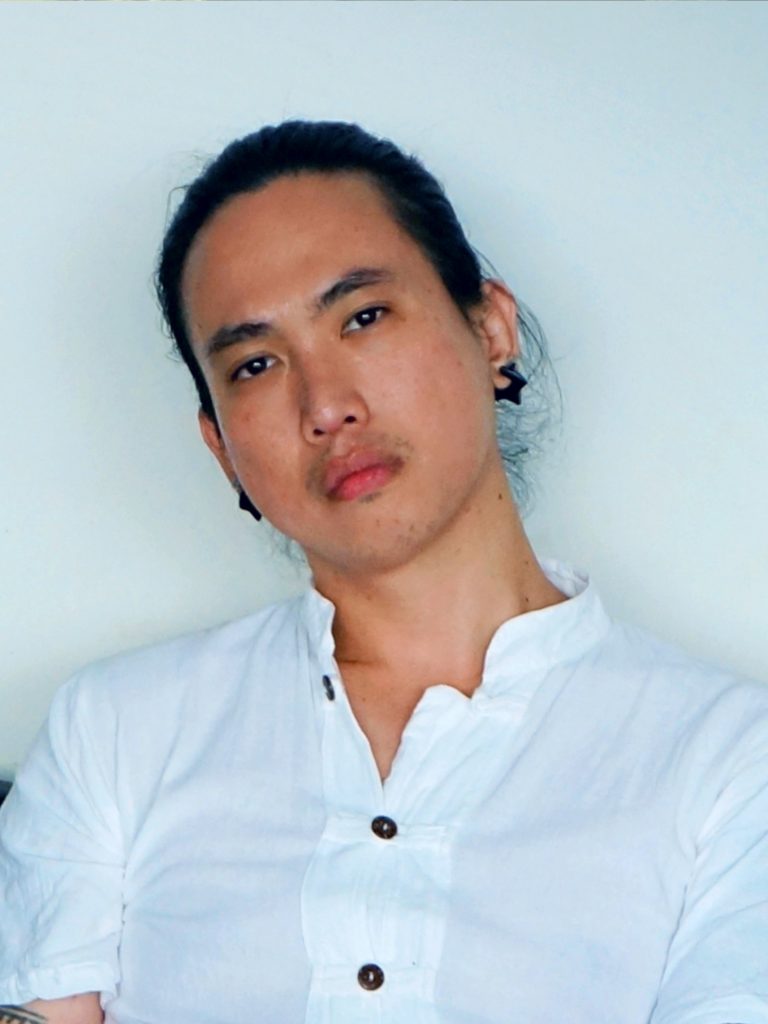archipelago by Cristian Tablazon
archipelago by Cristian Tablazon
This project, which builds on lines 1011 to 1625 of Cirilo F. Bautista’s epic poem The Archipelago, for the most part preoccupies with topography and texture. Treating the text as both scenery and raw visual material and regarding the page as an intimate geography or panorama, archipelago reduces the designated sections of the urtext into inventories of material detail and ecological phenomena, image fragments, tangible items, figments, patina, and debris. I tried dismantling the Romantic first-person voice of The Archipelago and actively sought to erode and superscribe Bautista’s grand gestures to mean and enact yet another master narrative, disassembling the poem’s oratorical flourish and affectations of modernist lyricism and all labor toward allegory and History. What I wanted to achieve was something far less rhetorical and hermeneutic, far less eloquent, the exact opposite of epic and monument, something way more minor, more dispersed, more ephemeral and interstitial, more ‘pelagic’, and something that finally conjures a seemingly archival and littoral sedimentation.
Early on in the process of making this project, I drew impetus from the work of anthropologist Stuart Mclean. He deems the island as “at once a landscape densely marked with the enduring physical after-traces of the dead of past generations and one subject to continuous refashioning through ongoing marine erosion,” and explores “the material specificity of islands as settings for a variety of encounters of a rather different kind: between the living and the dead, between solid and liquid modalities of matter, between humans and a range of other-than-human materialities and, not least, between human-centered, culturally calibrated time (including both historical time and the temporalities of environmental and geological change) and the more definitionally elusive, impersonal and non-linear time of becoming and dissolution…” I proceeded with the project with the aim of transforming and recasting the original text in a manner that generates a new work that prominently resonates and performs these ideas, and with our own archipelago in mind.
The Photography of Cristian Tablazon
The Photography of Cristian Tablazon
READ Interview with Cristian Tablazon by Cyril Wong (April 2017)
[pdf-embedder url=”http://queersoutheastasia.com/wp-content/uploads/2020/10/QUEER-SOUTHEAST-ASIA-Cristian-Tablazon-Ending.pdf” title=”QUEER SOUTHEAST ASIA – Cristian Tablazon – Ending”]

Cristian Tablazon lives and works in Los Baños, Laguna in the Philippines where he co-runs Nomina Nuda, a small nonprofit curatorial platform and exhibition space. His works have been shown at GAMeC (IT), Image Forum Festival (JP), Artspeak (CA), Animistic Apparatus (TH), Ayala Museum (PH), Centro Casa Àsia Madrid (ES), PHotoESPAÑA, Spaceppong (KR), Lostgens (MY), CICA Museum (KR), ArtCenter College of Design (US), The Wrong Biennale, and Seattle Center Armory (US), among others. Tablazon is also a member of the Film Desk of the Young Critics Circle and an incoming artist-in-residence in Udine for the seventh edition of B#Side War in 2021 through a grant from the Regional Council of Friuli Venezia Giulia. He will also be curating a group exhibition consisting of photo-based media at the Cultural Center of the Philippines, slated from July through September 2021. His research interests include memory and autobiography in moving-image practices, crises in representation of historical traumas in visual media, and constructions of futurity through interventions in art and natural history in the so-called East Indies under martial-colonial rule.

